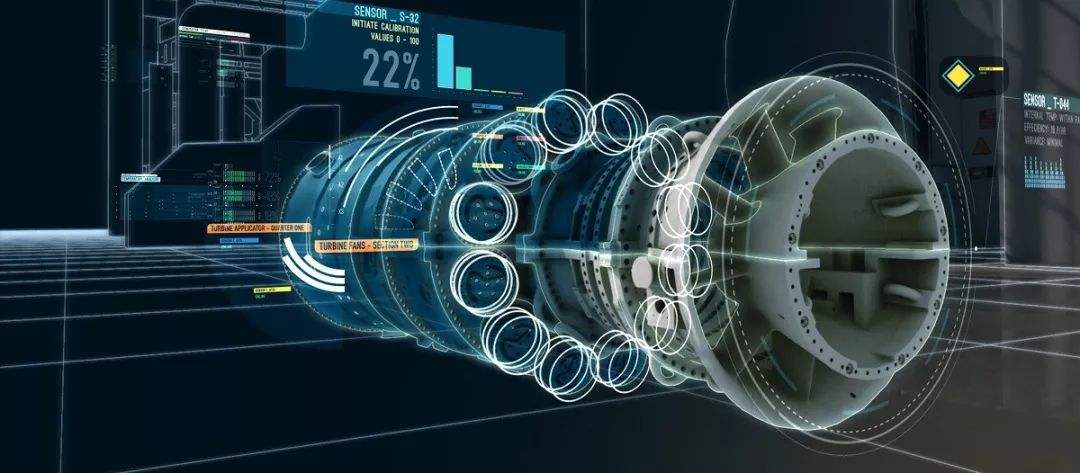Thermal imager lens interface
For infrared thermal imager,lens is an important component,which will directly affect the quality of thermal image and the accuracy of temperature measurement.There are many kinds of lens interfaces,such as C interface,CS interface and S interface.What is the difference between these interfaces?How to select a lens compatible with the thermal imager lens interface?
Rear flange distance of C and CS interface thermal imager
C and CS interface lenses are threaded lens interfaces used by most industrial CCD thermal imagers and lenses.The difference between the C and CS interface devices is the distance between the lens flange(the part on the shell that connects with the thermal imager)and the lens focal plane(where the CCD sensor must be located).This is called the rear flange distance.
Schematic diagram of typical C or CS interface lens
The distance from the rear flange of the C-interface lens is 17.53 mm,and the distance from the CS interface lens is 12.53 mm.However,on the FLIR thermal imager,due to the existence of 1 mm infrared cut-off(IRC)filter and 0.5 mm sensor sealing window,the actual distance needs to be compensated.These two glass pieces are located between the lens and the sensor image plane.FLIR installed this IRC filter on the color thermal imager;In monochromatic thermal imagers,IRC is replaced by transparent glass windows.The sensor sealing window is installed by the sensor manufacturer.Considering the refraction of these glass parts,the distance between the rear flange should be compensated based on the nominal value.
If the thermal imager with CS interface and the lens with C interface are used,a 5mm spacer can be added to achieve correct focusing.However,if a thermal imager with C interface and a lens with CS interface are used,correct focusing cannot be achieved.
Compatibility with M12 microlens
M12(sometimes called S interface)optical devices are often used to replace C interface or CS interface optical devices because of their small size,low c metal,lens and CS to M12 adapter,and some thermal imagers with M12 lens interface pre-installed.
FLIR’s cast metal M12 lens base is made of zinc alloy,which can be installed with sensors in larger format,such as Sony ICX445 CCD and Sony IMX035 CMOS.Other functions include fixing screws for adjusting the optical back-focus length,locating pins for accurately aligning the lens base with the thermal imager circuit board,and IRC filters.
FLIR also provides a CS to M12 lens adapter for connecting the M12 lens to a thermal imager equipped with a CS interface lens base.
Certain wide-angle(short focal length)M12 lenses may have some compatibility problems.The compatibility problem is mainly caused by the difference of optical back focus,as described below.
focal length
Another important consideration when selecting a lens is the focal length.A lens with a focal length approximately equal to the diagonal size of the sensor can reproduce the normal viewing angle for the human eye.A lens with a shorter focal length than normal(also known as a”wide-angle lens”)can capture a larger field of vision.A lens with a longer focal length than normal(that is,a”telephoto lens”)captures a smaller field of vision.Therefore,when considering the focal length,we must consider the size of the sensor,the field of vision to be captured,and the approximate distance between the lens and the subject,also known as the”working distance”.
The focus is the intersection position of all incident rays parallel to the optical axis on the optical axis.Focusing is achieved when the light from the same point on the scene is refracted and intersected at the same point on the image plane.This concept is shown in the figure below.Note that for symmetrical lenses,the focal points F and F’are equidistant from the lens.After refraction,the light passing through F reaches the image plane in the direction parallel to the optical axis.
The relationship between focal length,working distance and image distance is shown in Gaussian lens formula:
In many imaging application scenarios,the working distance is far greater than the image distance.In this case,the above formula can be approximated as:
As you can see,the image distance is roughly equal to the focal length.The simplified light diagram for this situation is shown below.Only the main light emitted from the edge of the sensor is shown in the diagram.These rays pass through the center of the lens and do not change direction.
In this case,the approximate value of focal length is shown in the following formula:
For close application scenarios such as macro photography,the image distance cannot be approximated to the focal length because the working distance is not significantly greater than the focal length.The more accurate form of the above equation(applicable to both short and long working distance)is as follows:
Many lens suppliers provide lens selection calculators on their websites,which generate the recommended focal length based on the approximate form of the focal length formula.Because the calculation is very simple,if in doubt,it can be done manually with the sensor size known.The sensor size is usually given in fractions of inches.For historical reasons,the actual size of the effective imaging area of the sensor cannot be directly obtained.The following table lists the width,height and diagonal length of several standard sensor sizes.
For example,suppose an application scenario uses a 1/2″sensor,a 100 mm working distance,and a 50 mm horizontal field of vision.From the table,the 1/2″sensor is 6.4 mm wide,4.8 mm high and 8 mm diagonal.In order to achieve the specified horizontal vision,we adopt the following formula:
Or use precise formula:
The focal length calculated by accurate formula is 11.3 mm,and the focal length calculated by approximate formula is 12.8 mm.This deviation increases with the decrease of the relative ratio of working distance and focal length.
After selecting the most satisfactory focal length,it may be necessary to adjust the working distance to achieve the desired field of vision.In addition,keep in mind that a lens with a short focal length usually presents significant distortion.The actual distortion degree depends on the specific lens used,and may have a great impact on the actual field of vision.The above formula ignores distortion.If the lens distortion is large(for example,>10%),the accuracy of the above formula is not enough to predict the focal length and can only be used as a starting point.The lens data sheet should be consulted.Generally,wide-angle and fish-eye lenses specify field angles for each sensor format they support.This field angle is used to calculate the working distance(in distance units)of a given field of view.
Sensor size
When purchasing a lens,ensure that the lens is compatible with the optical size of the image sensor used by the thermal imager(such as 1/3″,2/3″,etc.).The image projected by the lens must cover the entire sensor.Lens used for larger sensors(such as 2/3″)can also be used for smaller sensors(such as 1/3″),but may lose resolution(see below).
The lens used for smaller sensors(such as 1/3″)cannot be used for larger sensors(such as 1/2″),because the lens may not be able to project a large enough image to cover the entire sensor,resulting in a halo.In this case,the four corners of the image may appear blurred,dark or even completely black.
The following table shows the approximate width(W),height(H)and diagonal length(D)of the effective area of different size sensors,as well as the clipping factor related to using some lenses for smaller sensors.For example,suppose we have a 6 mm lens for a 1/3″sensor and want to know which lens has the same field of view when used for a 1/4″sensor.The cutting factor of 1/3″sensor and 1/4″sensor is 1.33.Therefore,a focal length of 6 mm/1.33=4.5 mm should be selected.
Sensor spatial resolution and megapixel lens
Another important factor in selecting a lens is the number of pixels corresponding to the total area of the sensor.This measurement parameter is usually inversely proportional to the size of the pixel(pixel unit).The higher the number of pixels,the smaller the individual pixel,and the closer the distance.The smaller the pixel spacing on the sensor,the stronger the ability to record(sample)small details.This ability is called spatial frequency or spatial resolution.High-density sensors require megapixel(MP)lenses made of high-quality optical components,whose optical components can project images at the same or higher resolution as the sensor.
The following table shows the sample sensors used in the FLIR thermal imager and whether the megapixel lens should be used.It is recommended to use megapixel lens for megapixel sensor.For a sensor with millions of pixels,the megapixel level of the lens should reach or exceed the number of megapixels of the sensor.If a megapixel sensor uses a conventional lens,the image may be blurred,because the lens may not provide enough high resolution for the sensor.Although the megapixel lens can be used for non-megapixel sensors,it is not feasible from the perspective of cost performance.
The lens format should also match the sensor format to obtain the best performance.For example,if a 1 megapixel,2/3″format lens is used on a 1 megapixel,1/3″sensor,it may not produce the best performance,because the sensor can only capture part of all the details generated by the lens.Due to the small sensor area,the 1 megapixel,1/3″lens can provide higher resolution than 1 megapixel,2/3″to capture the same level of 1 megapixel image content.
The spatial resolution of the sensor is measured by the number of line pairs(lpm or lp/mm)per millimeter,indicating the minimum size of the repeated black/white line pairs that the sensor can distinguish.A 1/3″,1.3 megapixel sensor,such as Sony ICX445,has a pixel size of only 3.75 microns and a resolution of about 133 lpm(1/3.75µm×1/2×1000µm/mm)。The megapixel lens can project more detailed images to take advantage of small format megapixel sensors with higher pixel density,such as Sony ICX445(1/3″,1.3 million pixels)or Sony ICX655(2/3″,5 million pixels).
The resolution of the lens is usually measured by the black-and-white strip image set with different spacing(lpm).The minimum distance that can be resolved(on the sensor)is considered as the resolution of the lens.Then,multiply the resolution by 2(convert the number of lines to the number of lines),and then multiply the sensor size to obtain the megapixel level of the lens.This indicator also has some defects.
First of all,the resolution of the lens changes throughout the field of vision(usually the highest near the image center),so the details of the measurement location of the resolution have a great impact on the megapixel level.The second flaw is that the understanding of”just distinguishable”may vary from tester to tester.In addition,the resolution of the two lenses may only be 133 lpm,so they have the same megapixel level,but this does not guarantee that they provide the same contrast at a resolution of 60 lpm.Therefore,the megapixel level does not mean everything.
The more systematic measurement parameter of lens resolution is modulation transfer function(MTF).MTF can measure the amplitude(contrast)of the sine pattern*image that circulates smoothly between black and white under a given spatial frequency(unit:cycle/mm(cy/mm,sometimes referred to as lp/mm or lpm)).The higher the spatial frequency of this mode,the greater the possibility of image blurring into uniform gray.Therefore,the nominal”resolution”of this measurement parameter is the frequency at which the contrast decreases to a certain percentage of the low-frequency contrast,similar to the bandwidth of the circuit.
This parameter is usually expressed as MTF50(50%of low frequency contrast)or MTF30(30%of low frequency contrast).Sometimes MTF10 is also used,which is roughly equal to the”just resolvable”resolution obtained from the histogram(see above).MTF10 should be used with caution because it is difficult to measure reliably.Another indicator is to measure the contrast of a finite set of specific frequencies,which is usually presented as a function of the radial position in the image.Although MTF data can provide more detailed lens quality information than simple megapixel level,it is more complex to interpret and the data is not necessarily available.


